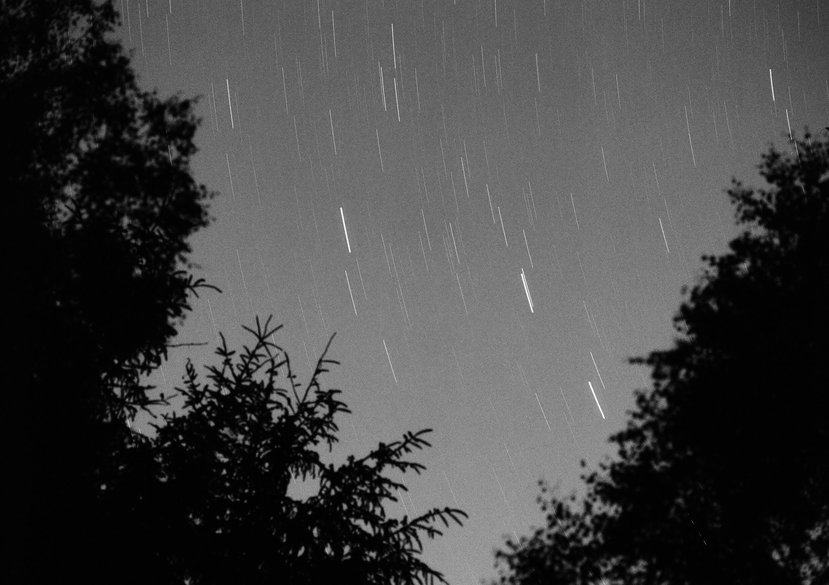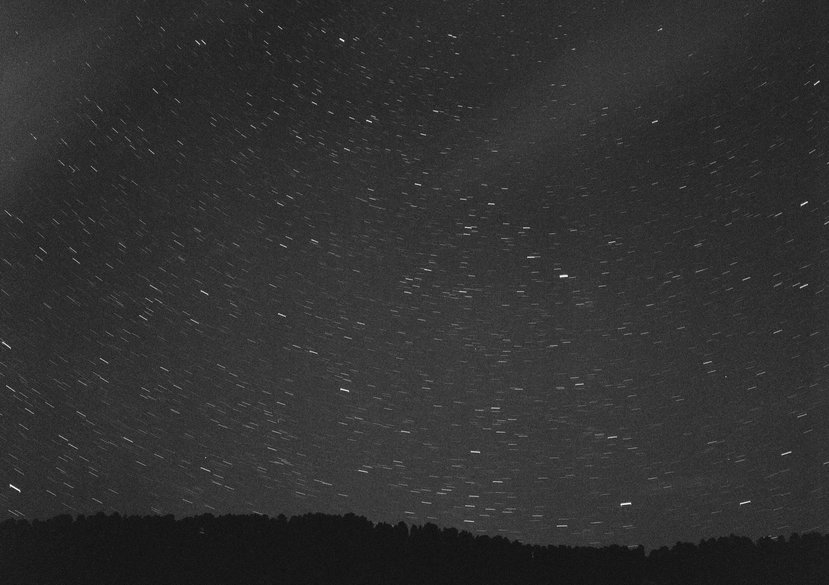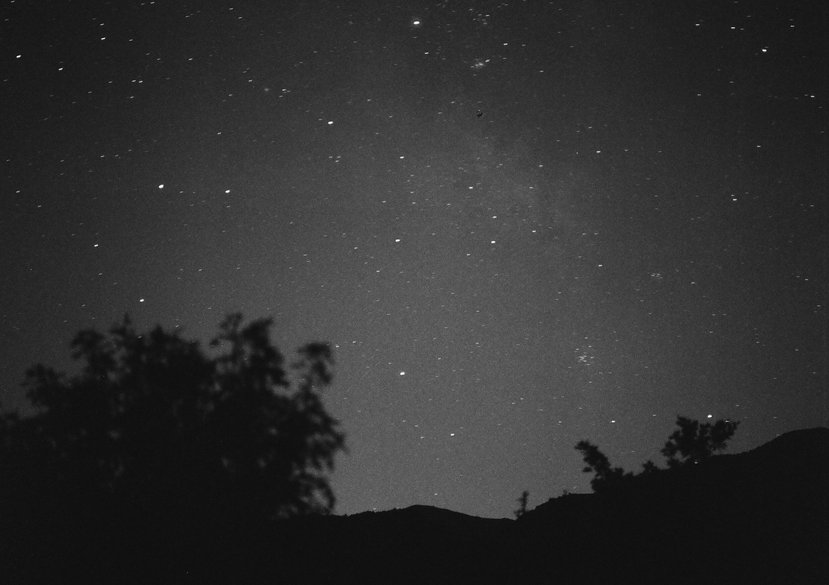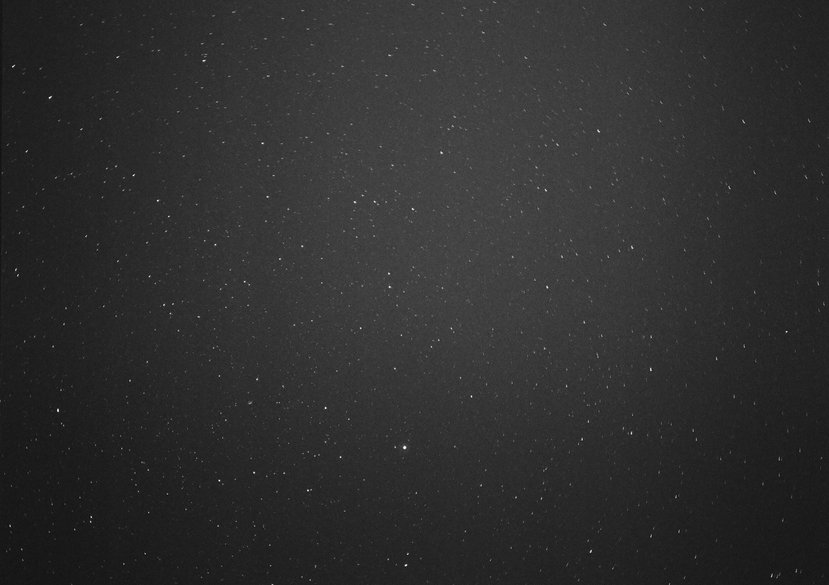
Ancient Light: Rematerialising The Astronomical Image
How can the field of astronomical photography, viewed through the lens of new materialism, alter our collective perception of ecology? How does the entanglement of astronomy and materiality alter our perception of the photographic object?
This practice-based research considers what it is to capture light that has been travelling thousands, if not millions, of years onto photosensitive film. By analysing this interaction between astronomy, new materialism and photography, I provide new insights into how this collision of theories alter our collective perception of ecology. Jane Bennett’s concept of the vitality of matter is compared with Karen Barad’s theory of Agential Realism, to enhance our understanding of the intimate connection between human and non-human beings. Leading on from this, these new materialist texts are compared to theories surrounding the materiality of the photograph, and the concept of “the photographic object”.
This body of research is anchored by my fieldwork within the UCLO Observatory and Kielder Observatory, utilising large telescopes to expose light from distant stars (such as Arcturus, Mizar and Alcor) onto photosensitive film. Fieldwork also includes residencies within rural areas, away from light pollution within Ireland, Italy, Spain, Iceland, and the UK. During these residencies, I have had the opportunity to take long exposure photographs of the stars, using 35mm, 120mm and 16mm film.
My research combines contemporary scientific innovation with historical photographic practice, maintaining a focus on the materiality of the image. Due to this focus on materiality, the sustainability of the analogue photographic development process has come under scrutiny. From studying the stuff of photography in depth, I consider the vitality of matter within my practice. Within this text, I will consider how photographic materials come to be, and how they may affect our environment.
This research includes study within a number of astronomical archives, including the Royal Astronomical Society, the UCL Space History Archive, the Carnegie Observatory archives and the Hale Solar Laboratory in California, amongst others. Here, astronomical photographic objects (such as glass plates, tintypes and silver gelatin prints) were analysed, considering both their scientific and philosophical meanings. These archives hold photographic objects which have changed our current understanding of the universe during the past century. In the case of Hubble’s variable plate, a glass plate photograph held at the Carnegie Observatory Archives, this photographic object provided evidence that the universe was expanding – shrinking Earths’ place in the cosmos whilst simultaneously opening up a vast arena for new discoveries.
This research provides new insights related to new materialism and photographic theory embedded within the practice based research. I consider the materiality of Ancient Light, taking into account the materiality of photographic film, life-forms and the stars. To this end, I also consider my own use of photographic materials, enabling me to invent new ways of developing film that are more sensitive to the environment.
Analogue astronomical photography, viewed through the lens of new materialism, uniquely allows us to understand the intimate connection between the cosmos and the Earth bound. Silver is found within distant stars, yet it can be mined from the depths of our Earth and used to create photographic images. Our collective perception of ecology is altered as astronomical photographs continually remind us that conscious and diverse life is rare, both within the timeline of the universe and the dark depths of the cosmos.
This entanglement of astronomy and materiality alter our perception of the photographic object as we learn that the materiality of the photographic is born of the stars. By understanding more about the materiality of photography and astronomy, we more deeply understand the importance of innovating new methods of eco-friendly photographic practice. This research provides new perspectives on the photographic object that is produced by ancient light travelling immense distances through the void of space. Distinct from contemporary astronomical photographic images which are often made of composites and false colour, Ancient Light aims to demonstrate the intimate connection that humans share with the stars.
Key details
School, Centre or Area
Gallery
More about Melanie
Biography
Melanie King is an artist and curator with a specific focus on astronomy. Melanie is co-Director of super/collider, Lumen Studios and the London Alternative Photography Collective. She is a visiting lecturer on the MA Photography programme at the Royal College of Art, and the BA Photography course at University of West London. Melanie is a final year PhD student at the Royal College of Art.
Degrees
MA Art and Science, Central Saint Martins, London, 2013
BA Fine Art, Leeds College of Art, 2011
Awards
Grantham Art Prize, 2019
Exhibitions
Melanie's solo exhibitions include Leeds Art University, Bloomsbury Festival and the Blyth Gallery, Imperial College London. She has exhibited in group shows at The Photographers' Gallery, Argentea Gallery, Guest Projects, Space Studios and the Sidney Cooper Gallery. Melanie has also exhibited in a wide range of international galleries, such as the Hasselblad Foundation in Gothenburg, Williamson Gallery in Los Angeles, CAS Gallery in Japan and Unseen Amsterdam. Melanie has attended residencies organised by Lay of the Land Ireland, Joya Arte and Ecologica Spain, Bow Arts London, Grizedale Forest and SIM Reykjavik, Iceland.
Conferences
Melanie regularly presents her work at conferences, universities and galleries. Notable venues include the Victoria and Albert Museum, The Courtauld Institute of Art, the Science Museum, The Photographers' Gallery, Tate Modern, Art Center Pasadena, University of the Arts Helsinki, The European Geosciences Conference: Vienna, Kosmica: Mexico, Kosmica: Paris, Helsinki Photomedia and Second Home. Melanie has provided guest lectures to Bath Spa University, Leeds Art University, London South Bank University, London College of Communication, Central Saint Martins and the International Space University: Space Studies Programme.
Commissions
Melanie has been involved in a number of large-scale commissions, including the EU Commission Ispra, Green Man Festival, Vivid Projects, Bompas and Parr X Citizen M Hotel, Mayes Creative, Design Miami x COS Stores, Chelsea Flower Fringe and the Wellcome Trust.



